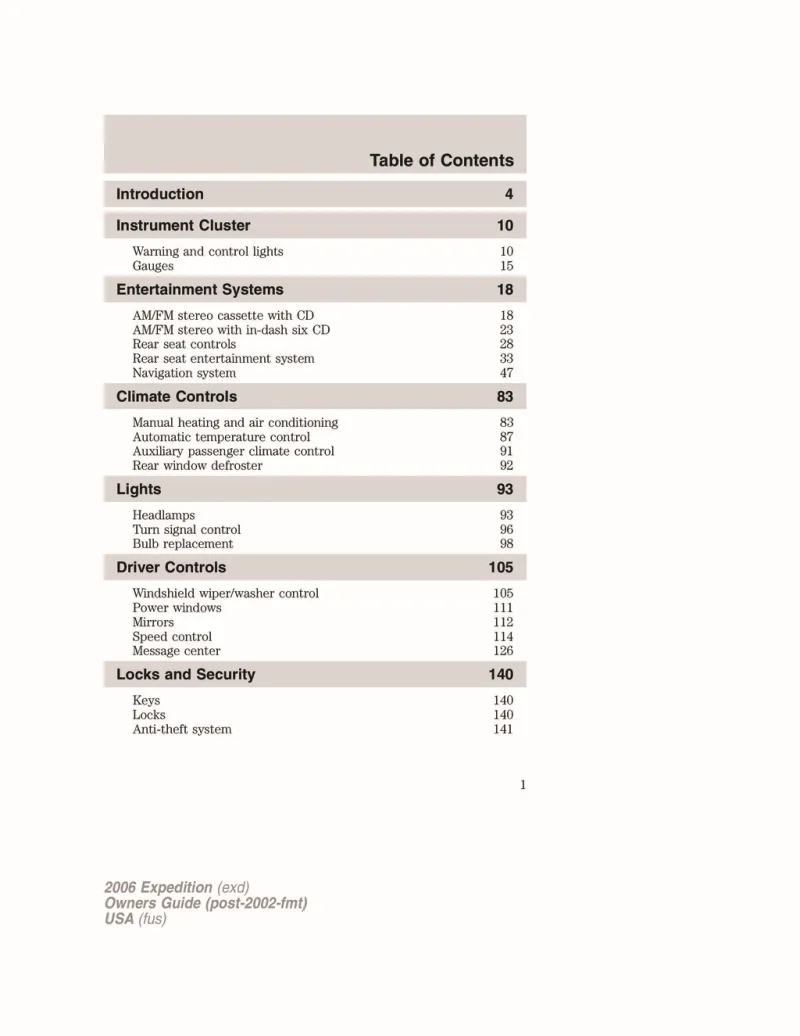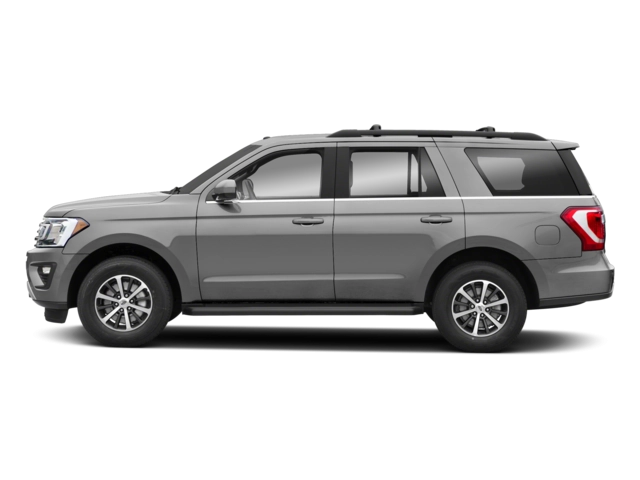2006 Ford Expedition Owner's Manual

Table of Contents
2006 Ford Expedition Overview
Introduction
The 2006 Ford Expedition is a full-size SUV that delivers a perfect blend of power, comfort, and versatility. Designed for both family outings and heavy-duty towing, the Expedition caters to adventurous spirits while ensuring passengers enjoy a smooth, spacious ride. With generous interior room and impressive safety features, this vehicle is built to tackle any road with confidence.
Powertrains
The 2006 Ford Expedition is equipped with a robust 5.4-liter V8 engine, producing a hearty 300 horsepower and 365 lb-ft of torque. This potent powertrain not only provides excellent acceleration but also allows the SUV to tow a maximum capacity of up to 8,900 pounds when properly equipped, making it ideal for hauling trailers and boats. The Expedition runs on a four-speed automatic transmission, offering a seamless driving experience, whether you're navigating busy city streets or cruising on the highway.
Trims
This model offers several trims, including the XLT, Eddie Bauer, and Limited, each providing a different level of luxury and features. The XLT trim is geared towards practicality with essential amenities, while the Eddie Bauer trim adds upscale touches like leather seating and premium sound systems. The Limited trim tops the line with even more luxurious features, such as navigation and advanced technology, catering to those who desire the ultimate comfort during every ride.
Features
In addition to its powerful engine, the 2006 Ford Expedition boasts a variety of standard and optional features designed to enhance the driving experience. Key offerings include third-row seating for accommodating up to eight passengers, power-adjustable pedals, rear parking sensors, and a DVD entertainment system for backseat passengers, ensuring everyone stays entertained on long journeys.
Owner's Manual
The owner's manual for the 2006 Ford Expedition is an invaluable resource for all vehicle management needs, covering essential topics such as routine maintenance, troubleshooting common issues, and understanding the vehicle's features. It provides clarity on operating instructions, safety tips, and warranty information, ensuring owners can maximize their SUV's performance and longevity.
User manual download
The Ford Expedition owner manual for the 2006 model year is to be found in PDF downloadable format on this page. The owner manual for the model year 2006 is free and in English, but the repair manuals are usually not easy to get and may cost more.
Manual Questions
Fill the form below and someone will help you!

